The Space Marine Legions of the First Founding make up the core factions and conflict of the Horus Heresy. In this article, the twelfth in our series, we have to strike a match and peer into the shadows, hunting for Corax’s silent killers – the Raven Guard.

Table of Contents
The XIX Legion
“Those who claim to walk in the light have no right to do until they have mastered the darkness within themselves.”
The Raven Guard are the black-clad scions of Corvus Corax – a liberator, freedom-fighter and deliverer of men. Their specialisms, to which they are still renowned in the distant future of the 41st Millennium, were rapid deployment, armed reconnaissance, and guerrilla warfare. They would strike from the shadows, and meld back into them before the enemy realised what had happened.
This skill at subterfuge and stealth would see them held up as an example of Imperial warcraft and ability. Tragically, however, like their brothers the Iron Hands and the Salamanders, the XIX would be bled white on the black sands of Isstvan V; one of the three Legions caught in the Drop Site Massacre in the opening salvos of the Horus Heresy.
Background
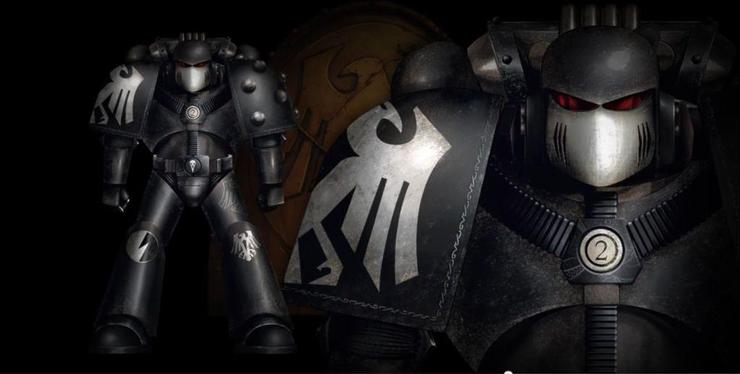
The Raven Guard were a proto-Legion which quickly found its place, standing in contrast to, say, the Thousand Sons. They were recruited from the Xeric tribes of the Asiatic Dustfields, savage (yet technologically adept) warrior tribes who fought with “relentless fury”. The early Raven Guard inductees were, in turn, set to policing Compliance amongst their former peoples, encouraging a mindset within the XIX of careful watching of conquered populations to ensure “any hint of recidivism” was “crushed utterly”.
The XIX participated in the Unification Wars, earning themselves a string of victories and a reputation for “cold, ruthless efficiency”, using small battle groups to strike fast, and decapitate the foe. When the Great Crusade began, the XIX found themselves operating frequently alongside the Luna Wolves – with Horus using the “blade of the XIX” to augment his own forces. This went so far as to cause some to say that “Horus treated the XIX more like a chapter of his own Legion than one with its own identity and destiny to forge.”
Without a Primarch it was, of course, difficult for the Raven Guard to become their own force. They kept a strong bond with their Terran roots, applying war paint of Asiatic dust and keeping grey armour, as opposed to any brighter heraldry. Their proto-cognomen of the “Pale Nomads” or the “Dust Clad” was well-earned, in this regard.
As their gene seed matured, however, they found these names were oddly prophetic – their skin leaned towards the unnaturally pale (in stark contrast to, say, the Salamanders), and their eyes and hair turned black as frozen midnight. When they were reunited with their Primarch, the reasons for this became clear, and their true name was born.
Corax, following the scattering of the Primarchs, had landed on Lycaeus, a barren moon of a planet named Kiavahr. Lycaeus was a prison moon, where criminals and enemies of the Kiavahran guilds were imprisoned and forced to mine as slaves. Corax quickly became a saviour and deliverer of these oppressed people, moving from place to place to build an uprising against the slave lords of the moon.
As he did so, he came to understand his own preternatural abilities – the ability to move without being detected, keen intelligence, and the raw power of a Primarch. Through his skill and charisma, Corax built up a rebellion who finally overthrew their hated overseers, bleeding them dry in a series of preliminary attacks before an all-out battle to throw off the shackles. As the Emperor of Mankind arrived to reclaim his son on the eve of Corax’s victory, the Master of Mankind allowed Corax time to complete his mission and defeat the guilds.
And so Corax did, ultimately bathing Kiavahr in atomic fire and blood, massacring the guilder overlords, conquering his former masters, and renaming Lycaeus Deliverance. The Raven then joined his Legion.
With Corax at the helm, the Legion continued its work in the Great Crusade, adopting Corax’s style of war – favouring stealth, guile, vigilance and swiftness to temper the more bloodthirsty urges of the Xeric tribesmen. The Raven Guard honed their skills, earning a reputation for excellence, and, in particular, technological innovation. Their stealth technology set them apart from the rest of their brother Legions, utilising “Whispercutters” and “Shadowhawks”, which caused the ire of the Mechanicum of Mars. This is exemplified in their famous “Mark VI” power armour, which at the start of the Heresy was in its testing stages.
Finally, the first overtures of the Heresy began. With the Raven Guard, some would argue, the Battle of Gate Forty-Two was where things began to decline. In a campaign against the Unsighted Kings, a xenoform threat who had subjugated the Akun-Sothos Cluster, the Raven Guard, Luna Wolves, Vlka Fenryka and Iron Warriors executed a campaign of re-Compliance. At the climax of this, an assault was planned on the heavily fortified lair of the Unsighted Kings, led by the newly-minted Warmaster Horus Lupercal.
In this, Horus demanded the Raven Guard undertake the storming of the most heavily-fortified part of the gate, despite the protests of Corax, who felt his Legion would be better suited elsewhere in a series of diversionary attacks. Insulted by Perturabo, and counselled by Russ, he eventually agreed to Horus’ plan, which ultimately reaped a bloody toll on the Raven Guard, reducing them to the smallest of the Legiones Astartes at that time once the victory was won.
Corax was embittered by this, and had lost many of his best officers in the fierce fighting – however, in some ways, this was a blessing; many of his Terran-born forces died at Gate Forty-Two, and these Legionaries had been closest with the Luna Wolves during the Crusade…
During the Heresy
“War is the crucible in which we burn. In the fires of battle is the past consumed and the future born on tongues of flame. No greater fire has there been in our times than the three bloody hours of the Drop Site Massacre.”

What can be said about the role of the Raven Guard in the Horus Heresy? One of the Shattered Legions, they formed the tip of the spear which Rogal Dorn thrust at the heart of the Warmaster, only to have it splinter and break upon the armour of his treachery.
At the Drop Site Massacre, the Raven Guard fought like heroes, but were all but wiped out – by some reports, down to single-digit thousands in terms of Legionary numbers, an absolute calamity.
It is only by a miracle that Corax himself escaped the fighting, almost killing his brother Lorgar and fending off the terrifying Gal Vorbak. The Raven Lord had to fight his way to freedom for days of cat-and-mouse hunting – known as the Raven’s Flight in the annals of the Legion – before ultimately being rescued by Commander Branne.
Following his rescue, Corax oversaw the reorganisation of the Legion into Talons, Falcons and Hawks – smaller denominations of Legionaries who were more flexible and able to harry and damage the Traitors. Desperate to rebuild his Legion, Corax psychically communed with the Master of Mankind, ultimately retrieving some original, unblemished, Astartes gene-stock.
Sadly, it was not to be – the newly-minted “Raptors”, born of this fresh stock, stronger and more capable than typical Raven Guard, had been tainted by daemonic corruption due to the actions of the Alpha Legion. The result was hideous mutations and corruption. Corax tried to manage this disaster, before ultimately having to accept the failure of his vision and euthanise the mutants.
Reduced to a shadow of their former selves, the XIX devoted their efforts to doing what they could – striking fast, from the darkness, to destroy as much of the Traitor war materiel and assets as they could, before the arch-enemy marched on Terra.
Legion Special Rules
The Raven Guard have a number of special rules and equipment which affects their playstyle:
- By Wing & Talon: All Legiones Astartes (Raven Guard) gain a certain special rule, depending on the type of unit. Infantry (except for Terminators or Jump Infantry) gain Fleet and Infiltrate. Jump Infantry, Bikes/Jetbikes and Terminator armoured Infantry gain Furious Charge.
- Flesh over Steel: Raven Guard detachments may not have more units in total with the Tank type than with Legiones Astartes (Raven Guard).
These rules are deceptively simple, but have an enormous impact on army composition. It means, for example, that you cannot take certain Rites of War, but massively buffs some.
Furious Charge on Terminators and Jump Infantry is no joke, and Infiltrate across the board can lead to some amazing combinations and tactics. What is clear, however, is that Infantry are going to be the core of any Raven Guard force.
Legion-Specific Wargear
- The Raven’s Talons: Described as “works of art”, these artificer Lightning Claws are a +10 upgrade on top of normal Lighting Claws, and grants Master-Crafted and Rending.
- Infravisor: Any Raven Guard Character can take this for +5 pts, and gains Night Vision – but counts as Initiative 1 if a Blind test is required (ouch!).
- Cameleoline: Any Raven Guard independent character may be given this upgrade for +5pts, but this is incompatible with Terminator Armour, a Jump Pack, or a Bike/Jetbike. It grants Stealth.
This wargear is extremely thematic. Raven’s Talons are quite expensive as independent upgrades, but when taken on (as we discuss below), Dark Furies, they can be absolutely devastating due to the high number of Furious Charge-enhanced, Shred attacks.
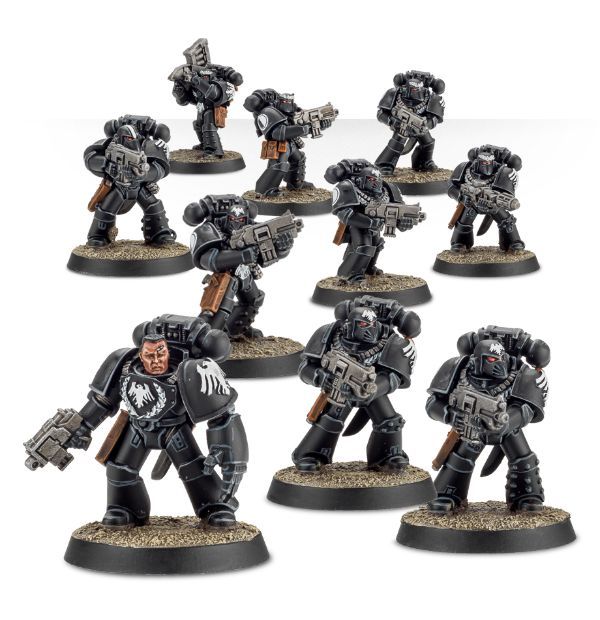
Legion Rites of War
The shadowy sons of Corax can use two unique Rites of War – Decapitation Strike and Liberation Force.
Decapitation Strike
This particular Rite of War is intended to emphasise one of the Raven Guard’s quintessential tactics – a surprise assault to target the enemy commanders, and slaughter them before the foe knew what was going on. An army organised on these lines is “like the predatory strike of a raptor at its prey.”
The limitations on this Rite of War are reasonably stringent – only one Heavy Support choice, and a single Consul, with no Fortifications or Allies. The single Consul is irritating, as you might have wanted to (for example) take a Vigilator and Moritat, but it is not debilitating.
The benefits are For Whom the Bell Tolls, which gives all Legiones Astartes (Raven Guard) the Preferred Enemy (Independent Characters) special rule. Remember this will work against the squad an enemy Independent Character is embedded in. This can be absolutely devastating when you combine it with high-quality shooting or close combat strikes.
You also get Predatory Strike, which allows you to re-roll the dice to decide who goes first/deploys first – which is nice, but not game-winning – and Fury From Above.
This latter rule gives you the ability to take Drop Pods for Tactical Squads, Veteran Tactical Squads, Tactical Support Squads, Seeker Squads and Heavy Support Squads (provided they can fit in them), and you can take Deathstorm Drop Pods as Elites as well as Heavy Support.
This allows for some real tactical flexibility, as you are not (as you would be for the Orbital Assault Rite of War) pidgeon-holed (raven-holed?) into selecting all Drop Pods or none. If you run this Rite, make use of this, and remember Deathstorms are really quite good after the FAQ. I would say a Plasma Support Squad in a Drop Pod has an easy place in this sort of list!
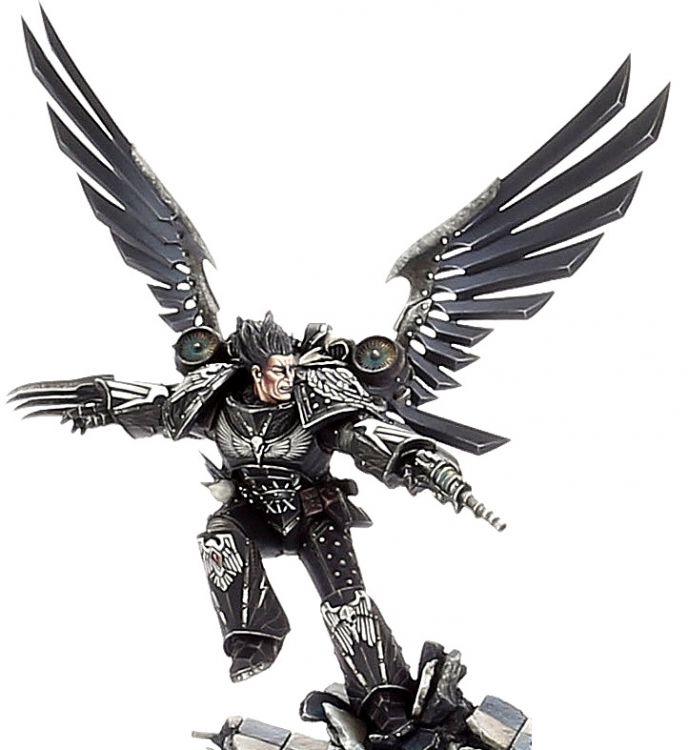
Liberation Force
This is a more unusual Rite of War, intended to represent a post-Drop Site Massacre Raven Guard, who are trying to liberate “the people of numerous worlds across the southern Imperium whose leaders had declared for the Warmaster.” It is essentially a guerilla-army style build.
To take this, you cannot use Shattered Legions, and must be Loyalist (hardly a restriction in practice). You also cannot take Fortifications, Immobile or Slow and Purposeful units. Note that this does not mean you can’t take Drop Pods. After the latest FAQ, they do not have “Immobile”, but instead suffer an “Immobilised” damaged result as soon as they land, which is a subtle, but important distinction.
The benefits for this Rite include Freedom Fighters, which allows the entire army to gain Zealot once per game at the start of a game turn, for that entire turn, and Slayer of Tyrants, which means Slay the Warlord gives D3 VP (where it is in play for the mission). You can also take Allied Imperialis Militia using Lead by Example, who become Fearless within 6” of Legiones Astartes (Raven Guard) units.
Overall this is quite powerful, and could make for some amazingly thematic “relief” forces. Freedom Fighters has some potential for shenanigans – I cannot help but remember the time I faced a Raven Guard force who used Go to Ground in cover to weather my Solar Auxilia firepower, only to then all get Zealot and immediately stand back up and move freely… truly shadowy tactics!
Legion Special Units
The Raven Guard have a range of thematic special units, including a unique vehicle.
Mor Deythan Strike Squad

The Mor Deythan are another one of those “knocked it out of the park” units from Forge World, where the models are amazingly evocative. These are the “Shadow Masters” of the Legion – stealthy without peer even among a Legion renowned for its infiltration capabilities.
The Mor Deythan come at 135 pts for 5, with BS5, Shroud Bombs, Stealth, Scout, Implacable Advance (post-FAQ) and Fatal Strike as part of this. Note that they only come base with a Bolt Pistol and Chainsword, which is a bit disappointing.
You can take more Mor Deythan for +20 pts each (not bad, but a bit pricy when you figure you have to pay for the weapons). They can take a Shotgun for +2 pts, a Sniper Rifle for +5 pts, or a Combi Weapon for + 7pts, with one in 3 getting a special weapon.
Overall, I would just load these guys up with Combi Weapons, because of the special rule Fatal Strike. This gives, once per game, Twin-Linked and Rending to their weapons, with Sniper Rifles getting a 5+ Rending ability.
Flamers are an obvious choice here, with the Mor Deythan executing a “Rhino Rush” in a vehicle which has used Scout to advance up, before deploying 5-7 of them and hosing down a unit. Plasma or similar is tempting as well, even if this makes Rending a bit moot.
Overall these are not cheap, but I think they are sufficiently competitively priced to have a place in a Raven Guard army, but only as a single squad I would say, with a specific purpose.
Dark Fury Assault Squad
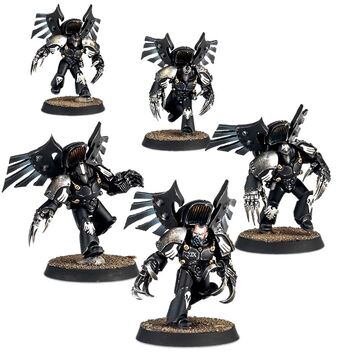
These are, in my view, a “hidden killer” (see what I did there) – on paper they look quite expensive and maybe not that good, but in practice… well. They can absolutely blend the enemy.
175 pts for 5, with an Artificer armoured Sergeant, they all have Jump packs, Raven’s Talons, and the special rules Sudden Strike and Fateful Descent. The Sergeant has Precision Strike as well (but this is pretty niche). +30 pts per model means they are not cheap, but pack quite a punch.
So why are they so good, if they are mostly T 4 3+ saves? Well, the ability to combine Sudden Strike with Furious Charge and the Raven’s Talons.
Sudden Strike gives you +1 I on the charge, which stacks with the +1 S from Furious Charge, giving you, per model, 4 Master-Crafted, Shred, Rending AP3 attacks, at Initiative 5. Whoa! 20 of those hits will give almost any Legion squad pause for thought, before you bulk out the squad.
Fateful Descent gives you a bit of flexibility, giving 5+ cover on the turn a squad arrives by Deep Strike.
I have seen these used in a few ways – pegging it up the table to hurl themselves into a T2 charge, or husbanded carefully to do a late-game decapitation. Personally, given their relative fragility, I would go for the latter. Perhaps have them combine with some sort of teleport homer or Nuncio-Vox to land them accurately upfield via Deep Strike on T2, and then go for a T3 charge.
Raven Guard Darkwing Pattern Storm Eagle Gunship
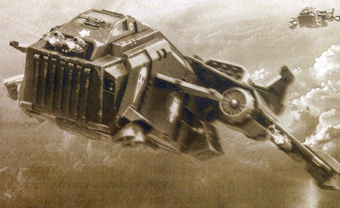
The Darkwing is not a unit with an official model, but is an interesting modification on the existing Storm Eagle model. I have personally never seen one “in the wild”, but they are quite a cool concept. Weighing in at 275 pts, they have the standard Storm Eagle stats, along with Stealth and Outflank (quite handy!), and a Vengeance launcher with Eclipse Missiles.
These are S 4 AP 5 Heavy 2 Large Blast, Blind, Concussive – basically “shock missiles” to soften up the enemy for the charge. Honestly, I really, really want to like these – it’s such a cool idea to blind the enemy before an assault team bails out to take the fight to the enemy. The problem is it’s quite unreliable.
Still, definitely worth a look, and you don’t need to modify an existing Storm Eagle dramatically as a model to run one of these (perhaps just use the Raven Guard special door kit?)
Legion Special Characters
Strike Captain Alvarex Maun – Master of Descent

Maun is the Master of Descent, commanding planetstrike operations for the Raven Guard on the front line, securing dropzones and coordinating the complex orbital ballet of Legionary deployments – particularly for a Legion renowned for heavy use of flyers and Drop Pods. On Isstvan V he conducted the most ambitious coordination of his career, overseeing essentially the entire Legion deploying as one to take the fight to the Traitors.
After Isstvan he was known to have survived, helping to save the life of Corax himself in a desperate Thunderhawk rescue run.
I love Maun as a character. He’s a great mixture of support and front line. On the tabletop you pay 140 pts for an Artificer armoured Praetor, with a Power Sword, a Nightfall pattern strato-vox and the Bleeding Edge rule.
The strato-vox is very interesting. It gives an 18” bubble around Maun where you can Deep Strike without scattering, and gives Legiones Astartes (Raven Guard) who deep strike the Counter-Attack rule on the turn they arrive. It also allows line of sight (not range) to be drawn from Maun for Barrage weapons. He has to be on the table at the start of the turn, however, for this to be used. This makes Maun a bit of a “focal point” around which your army turns, so beware of this – the enemy will no doubt target him.
He then has the Bleeding Edge rule, which means if he is in a Drop Pod he must arrive on the first turn, with no rolls for this. You can also re-roll Seize the Initiative.
If he is the Warlord, he then gets Coordinated Planetstrike, which allows all flyers and Drop Pods to rer-roll failed Reserve rolls – this is brilliant, so make sure he is the Warlord! He has Master of the Legion, so is a great leader for a Decapitation Strike Rite of War. Just don’t expect him to go toe-to-toe with enemy leaders in close combat, as he just has a Power Sword.
Moritat-Prime Kaedes Nex – The Raven’s Huntsman, “Blood-Crow”

Kaedes Nex is, even among the Raven Guard, considered to be a grim and dark figure (which is saying something). He is known as the “Blood-Crow”, and has a “macabre obsession with the hunt.”
He costs 155 pts, and has Consul stats with BS 6, Power Armour (a shame), a Refractor field, Shroud bombs, Melta bombs, Cameleoline, and two Fulcrum hand cannon. He also has a bevy of Special Rules – Counter-attack, Precision Shot, Relentless Stalker, Ill-omened, Gunfighter and The Raven’s Vengeance. Phew!
So, what does this all mean? Well, he is Loyalist-only, and his hand-cannon are unique, but not amazing – S 4, AP 4, Rending, Concussive Pistol weapons, which he can Chain Fire. Relentless Stalker means he picks an enemy Elites or HQ unit as “prey” during the deployment phrase, and can be placed within 18” of them, provided he is out of sight of all enemy units, and gains Shrouded for T1 if he does so – this is after all other units, including Infiltrators, are deployed. This is probably quite tricky to do if the enemy deployment zone is busy, but it will depend on the terrain.
The Raven’s Vengeance means when he is in close combat with his prey, he gets Zealot. If the enemy is destroyed in a combat in which Nex is involved, or a Shooting phase where he did one or more wound on his prey unit, then you get an additional VP. This is quite nice, and thematic.
Ill-Omened means he cannot be the Warlord or a compulsory HQ, or join units of any kind.
Finally, Gunfighter means he can use the hand cannon in close combat, using all of their rules (e.g. Rending and AP 4), but does not get +1 Attack for using two weapons.
Overall… I want to like Nex, as he is an edgelord in a legion full of them. However, he is just… not very good, with a 3+ save and AP 4 weapons – he’ll be slaughtered before he can do anything, as enemy Elites and HQ will be able to bat him away. A normal Moritat is just, unfortunately, better overall.
Corvus Corax – Master of the Raven Guard, The Liberator, Chooser of the Slain, The Shadowed Lord

Corax is a unique-looking Primarch, with alabaster white skin and jet-black eyes, described as “black shards of solid shadow.” He is an unparalleled master of stealth, sabotage, infiltration and liberation tactics, with the ability to completely conceal himself if required, and rally men like no other.
Corax is 450 pts, with a normal Primarch statline augmented by WS 7 and I 7. He is the Sire of the Raven Guard, giving + 1 I and + 1 S on the charge (for a mighty I 8 S 7!) and grants Legiones Astartes (Raven Guard) the Acute Senses rule, and gives them a flat 6” for Run moves while he is on the table. This is a nice flat buff and segues nicely with the existing RG rules.
Corax is also The Shadowed Lord, which means if he is on his own and not the closest target to the firing unit, or if the firing unit is a Psyker or Daemon, or another Primarch, then Corax can only be target with Snap Shots. Corax can also, at the start of his controlling player’s turn, be taken out of play and placed in Ongoing Reserves, even if this is in close-combat (but only if his Initiative is higher than his opponents). This can make for some very sneaky play – with careful positioning, Corax can’t be targeted by some weapons as a result (e.g. Blasts), and can rarely, if ever, be held up in combat by tarpit units like Thralls.
He then has the Panoply of the Raven Lord as his weapons, which include some artificer Lighting Claws and a deadly energy whip. In practice, this gives him a S (User) AP 2 Shred, Blind, Two-handed weapon with the Fighting Style special rule.
Corax has to choose, at the start of an Assault phase, his fighting style for all his attacks. He either has Death Strike, which means a 5+ to Wound always wounds irrespective of Toughness, with +3 to Armour Penetration, or Scourge, which is +D3 Attacks, or Shadow-Walk which is -1 to Hit Corax until the next controlling player’s Assault Phase.
These are all great – it means you struggle to pin Corax down in combat with vehicles (being an effective S9 base for armour penetration) and he can mix and match his abilities to take people on with reliable wounding. He also has a pair of Archeotech pistols for some nice AP 3 shooting.
He also has The Korividine Pinions, a “miracle from the Dark Age of Technology modified to suit the Primarch’s own exacting needs.” These make Corax Jump Pack Infantry, give him Hammer of Wrath (D3 S 5 AP 3) whenever he charges, reroll the Scatter Dice for Deep Strike where he only ever gets “Delayed” on a Mishap, and allows him to make Vector Strike attacks when he moves with his Jump Pack. This all adds up to some great mobility and flexibility.
Overall I would say Corax is not the strongest Primarch, but he is among the most flexible and tricky to pin down and eliminate – contrasted with, say, Vulkan, who is a bit of a “one trick pony” (deliver into assault in a Spartan), Corax can change tack mid-game to reinforce or support different parts of the board.
Finally, if you are keen on your fluff, you can take a 350 pt version of Corax in the context of a narrative campaign, representing him wounded in Isstvan V. This makes him 5 W 5 A, with a 3+/5+ and no Korvidine Pinions or Archeotech pistols. He has an Assault 3 Heavy Bolter and Hatred (Traitor Legions), Infiltrate and Scout. Definitely worse, but good fun!
Sample Army List
If I was to run a Raven Guard army, I would be thinking Drop Pods. These are not the most fun models to build, paint and transport, but they are very evocative of this Legion, and I think allow you to really play its strengths. A 1500 pt list is below on that basis.
Rite of War: Decapitation Strike
- HQ – Praetor with Artificer Armour, Jump Pack, Master-Crafted Paragon Blade, Melta Bombs, Digital Lasers
- Elites – Deathstorm Drop Pod
- Elites – Mor Deythan Strike Squad, Artificer Armour, x5 Combi-Flamer, Rhino w/ Dozer Blade, Artificer Armour
- Troops – Assault Squad – x15 men, x3 Power Axe, Artificer Armour/Melta Bomb/Power Fist Sergeant
- Troops – Tactical Squad – Additional CCW, Artificer Armour/Melta Bomb/Power Fist Sergeant, Rhino w/ Dozer Blade
- Troops – Plasma Support Squad x5, Drop Pod, Artificer Armour/Melta Bomb Sergeant
- Heavy Support – Fire Raptor Gunship, Autocannons/Hellstrike Missiles
This is intended to be quite a “fun” list, with the Mor Deythan and Deathstorm forming the T1 “alpha strike”, and then the Plasma team and Fire Raptor the “beta strike”, with the Tactical Squad guiding with the Nuncio-Vox as necessary. I would expand this to 2k with a Moritat + Destroyers (for the fluff), and some Javelins, and then look to add perhaps some Dark Furies.
Conclusion
The sons of Corax are an interesting Legion – a forgiving paint-style, some excellent unique models, and a fun emphasis on Infantry and Drop Pods on the tabletop. I have faced them a few times in battle and they are ferocious indeed! I would also view them as a great self-contained Allied force, if you were so inclined.
Next time, we turn away from stealth and guile, and look instead at frothing, berserker rage… that’s right, it’s time for the World Eaters!
Victorus aut Mortis!


